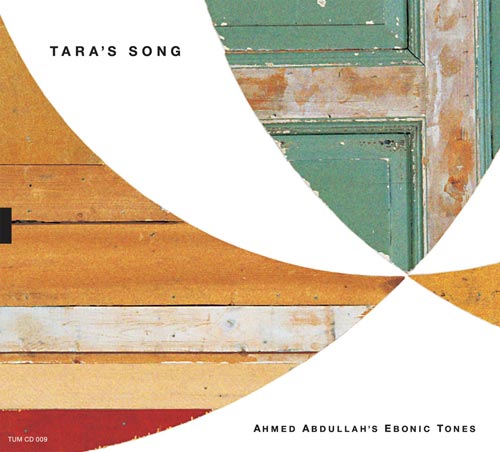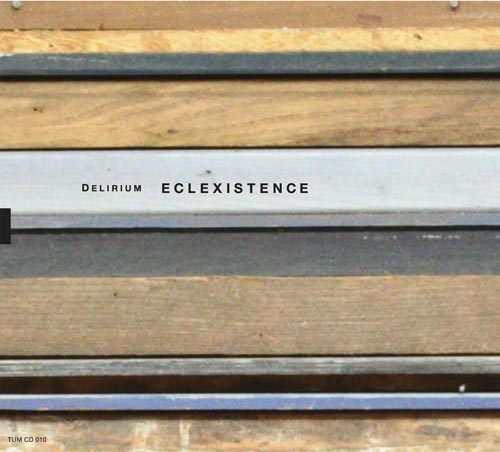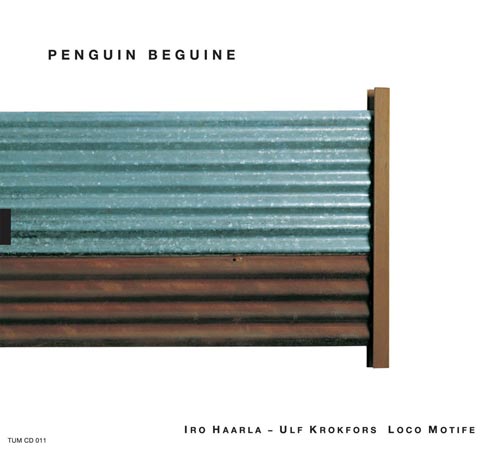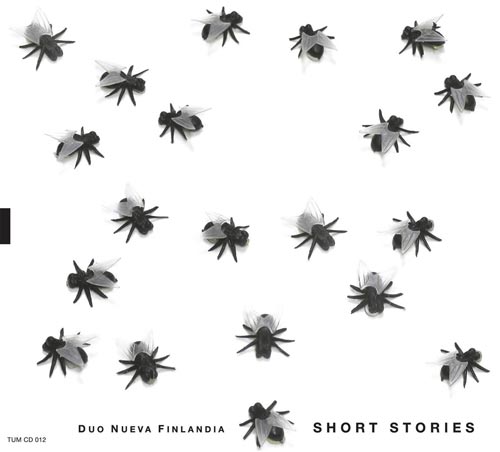|
|
 |

|
 |
Dusted Features
Dusted's Matthew Wuethrich examines Petri Haussila's TUM Records, a burgeoning label that documents the Finnish avant-garde jazz scene and beyond.
|
|
|
 |
Finnish Products: TUM Records
Upon hearing Sidney Bechet solo in 1919, the Swiss conductor Ernest Ansermet declared it was “the highway the whole world will swing along tomorrow.” He was looking prophetically, as many successive Europeans would, over jazz’s next rise. When in the late ’60s and early ’70s another of jazz’s many evolutionary horizons appeared, figures like Manfred Eicher at ECM, Werner X. Uehlinger at HatHut and Giovani Bonandrini at Black Saint looked over that rise and saw a steep drop into the abyss. A new music was emerging both in America and, just as significantly, in Europe, but there were few labels to document it. These individuals filled that void, and thus preserved a valuable phase in improvised music’s development. Without these labels, American artists such as Cecil Taylor, Anthony Braxton, the Art Ensemble of Chicago, Mal Waldron, Joe McPhee and Steve Lacy would have pitifully small discographies.
In parallel with these developments, European musicians were viewing American art through their own telescope. All across the continent, radical new strains of improvisation, and labels to document them, were emerging: in Germany, Jost Weber, along with Peter Brötzman, Alexander Von Schlippenbach and Peter Kowald, established Free Music Productions; in the Netherlands, the ICP and BV Haast labels appeared, documenting the likes of Misha Mengleberg, Han Bennik and Willem Breuker; in the U.K. Michael Walters’ Incus, launched in conjuction with Derek Bailey, Tony Oxley and Evan Parker, and Martin Davidson’s Emanem helped get the first stirrings of non-idiomatic improv on record; bassist Harry Miller and his wife Hazel set up Ogun as an outlet for the fruits of the South African diaspora in the U.K. Over the decades, the list has only gotten longer.
One can now add Petri Haussila, a corporate lawyer by day, and his Finnish label TUM to this list. After three years of running the label, Haussila has built a catalogue of 12 recordings that share the most important qualities of his predecessors: a recognizable brand marked by impeccable design and a collection of powerful music made by a roster of homegrown and international artists, the latter group including such luminaries as Reggie Workman, Andrew Cyrille, John Tchicai and Ahmed Abdullah.
TUM’s 12 releases to date encompass three generations of Finnish improvisers and a range of styles, from large ensembles (like Antti Hyti’s Suhkan Uhka and Iro Haarla and Ulf Krokfors’ Loco Motife) and quartets and trios (such as the young four piece Ilmilekki and the Finnish-Danish groups Triot and Delirium, and two trio sets led by saxophonist Juhani Aaltonen) to experiments in modern composition (Otto Donner and Juhani Aaltonen’s Strings Revisited) and duets (Duo Nueva Finlandia’s set of spontaneous compositions).
Haussila is attempting to fill another void in the development of free music, as Finland’s evolution has gone relatively unnoticed. The first generation of Finnish free improvisers got a helping hand when the independent Love Records emerged in 1966. Spurred on by the visits of John Coltrane, Albert Ayler and Charles Mingus in the early-to-mid ’60s, players such as saxophonists Juhani Aaltonen, Eero Koivistoinen, and Seppo Paakkunainen, trumpeter/composer Otto Donner, drummer Edward Vesala and pianist Eero Orjanen began pushing their own music beyond jazz’s prescribed borders.
For the next decade or so, Love provided a base for these excursions. When Love’s focus shifted to the more overt political vocal groups of agit-prop, Finnish free jazz lost some of its support. When in the late ’70s Edward Vesala went to the Finnish Jazz Federation, an umbrella organization that sets up tours, publicizes the music and provides other services, he was looking to establish his own label, Leo Records (no relation to Leo Feigin’s UK-based one). Petri Haussila was one of those who advised him.
Haussila says the experience with Vesala piqued his interest in the record business, but it took another 25 years before it became reality. In the interim, Finnish jazz musicians had to either release records on labels like Rockadillo and Texicalli, neither of which specialized in the music, or follow Vesala’s model and self-release their albums. Artist-run outfits like Abovoice in Turku and Fiasko in Helsinki have managed to amass quality catalogues but without adequate distribution, both have languished in obscurity.
The key, then, is a business perspective as strong as the aesthetic one. In addition to the usual funds that support Finnish music – the Foundation for Finnish Music and the Finnish Music Promotion Center – the White & Case lawyer has procured support for some of his albums from Finnish corporations such the telephone operator Sonera, and the paper manufacturer UPM Kymmene. Other Euro labels, such as HatHut, have enjoyed similar corporate sponsorship.
Uniform package design – another hallmark of labels like HatHut, ECM, Rune Grammafon, Winter & Winter and Ayler – has a hand in giving TUM a solid chance at becoming a recognizable brand. Rather than producing completely original artwork, designers Santtu Parikka and Juha Lökström keep with TUM’s mission to present Finnish art and music to a wider audience. The pair adapts the artwork of Finnish painters, choosing boldly colorful pieces they can cut up, reassemble, and zoom in on, then cover the tri-fold package with the results. So far, painter Juhani Linnavaara’s light-hearted surrealist scenes, Lars-Gunnar Nordström’s rhythmic geometric abstractions and Kari Caven’s wood-and-metal found-art collages have graced four covers apiece.
A thick booklet is then attached to each album, which gives each one a satisfying heft, a feeling that a listener has purchased a cultural artifact, not just a slim piece of plastic. Haussila indulges his own love of detailed booklets – for him an essential part of the listening experience – and includes numerous photographs, messages from the musicians, poems, essays by Haussila, extensive biographical detail on the musicians and painters, as well as notes on the compositions. The included texts range from the informative to the hokey cheerleading endemic to jazz liner notes, but such earnestness can be refreshing, providing a personalized stamp, another touchstone of European labels.
Such ambitious packaging is exemplary of Haussila’s long-term vision for the label, a vision similar to the production company model of FMP that includes promoting live performance as well as recorded documents. Earlier this year, the first TUMfest was held in Helsinki, and over its two days featured nearly the entire roster of TUM in one form or another. The festival summed up and celebrated what the label has accomplished so far, while it also looked forward: much of the talk onstage wished for more such gatherings in the future, and previewed TUM’s subsequent release of four new recordings.

Ahmed Abdullah’s Ebonic Tones - Tara’s Song
This buoyant quintet recording of trumpeter, jazz educator and Ra proselytizer Ahmed Abdullanh’s latest group represents the first TUM record not to feature any Finnish musician, and as such highlights how Haussila chooses groups according to inspiration, not to a rigid adherence to his mission of elevating the profile of Finnish improvisers. Haussila saw the group in 2004 during a trip to New York City, and it’s not difficult to understand the attraction. They mix the unusual frontline combination – trumpet, baritone saxophone and violin – with swinging themes, a jubilant rhythmic bounce, energetic solos and the celebratory atmosphere of a Sun Ra set, including some of his chants, into a stimulating whole.
The nine pieces here include a Monk tune, two Sun Ra compositions, one each from Ornette Coleman, Frank Lowe and Gigi Gryce, as well as two from Abdullah and a brief romp through the traditional “Iko Iko.” To a small ensemble setting they bring the high-energy stomp of Chris McGregor’s mid-’70s Brotherhood of Breath, infusing even Coleman’s dirge, “Lonely Woman,” with an uplifting feel. Billy Bang shows just how well the violin fits Monk’s music, while Abdullah and saxophonist Alex Harding create an easy counterpointing flow on nearly every tune.

Delirium - Eclexistence
The Finnish-Danish quartet’s self-titled 2002 release on Fiasko Records flowed with the young group’s effusive and witty interplay. But its compositions leaned at times too heavily on Ornette Coleman and Don Cherry, so that while the record was thoroughly enjoyable, it lacked a spark of originality. For Eclexistence, their second disc, the group’s wit, historical bent and improvisational energy spills over into their compositions.
From the shockingly rude horn intro on album-opener “Drive-Thru” to the transparent, ghostly harmony of closer “Kreutzer Valse,” the seven compositions are packed with schizophrenic mood swings and platforms for ensemble give-and-take. Cornetist Kasper Tranberg’s “Autoabsence” slips from a loose funking vamp to a jazz noir ambience, Innanen’s baritone casting long shadows over Tranberg’s foggy cornet chatter. Two short pieces from Innanen combine the free-flow dialoguing of Mingus’ early “Percussion Discussion” pieces with the miniaturized charm of Anthony Braxton’s “Small Composition” series. Drummer Stefen Pasborg and bassist Jonas Westergard follow every twist and turn Tranberg and Innanen pursue, whether obsessively riffing behind Innanen’ gutsy baritone on “Iki,” or musing abstractly while the frontline loses it.
For Delirium, Bubber Miley and Tomasz Stanko, Charlie Parker and Ornette Coleman, Jimmy Blanton and Gary Peacock, Baby Dodds and Edward Vesala are equally innovative, an approach that infuses their music with an egalitarianism sure to piss off hide-bound traditionalists and stuffy modernists. A most admirable quality.

Iro Haarla-Ulf Krokfors Loco Motife - Penguin Beguine
The specter of Edward Vesala looms large over the avant-garde of Finnish jazz. The drummer and composer’s winding, oblique themes, sensitive use of percussive colors, and flashes of humor turn up everywhere, as does the tightly focused interplay of his large ensembles. Keyboardist Iro Haarla and bassist Ulf Krokfors played key roles in Vesala’s Sound and Fury collective, playing on – and in Haarla’s case, helping to arrange – nearly all of his seminal ECM recordings. No wonder then that the deceased Vesala’s spirit looms over this recording as well, but Haarla and Krokfors augment and update his sound, adding rhythmic muscle and a host of electronic effects to their own large ensemble, Loco Motife.
The three-horn attack plus guitar creates a spectrum of possibilities, allowing collective soloing, more focused solo explorations, punchy accents and majestic themes. New timbres turn up constantly, provided mostly by Haarla’s rack of vintage synthesizers and organs, and her occasional turns on the harp. The shifting colors and possibilities posed by a large ensemble are constantly intriguing, as pieces like “Crimcum Cramcum” sprout fresh instrumental combinations and shift dynamic intensities in unexpected places.

Duo Neuva Finlandia - Short Stories
Bassist Teppo Hauta-aho and pianist Eero Ojanen belong to the first generation of Finnish musicians to engage in free improvisation on a regular basis. Their on-and-off collaboration dates back to the early ’60s, with the bulk of their careers spent pursuing other musical paths. Hauta-aho, in addition to work with Cecil Taylor and Mal Waldron, enjoyed a 30-year career as a member of either the Helsinki Philharmonic or Finnish National Opera. Ojanen found his calling as a theater and film composer, working the highly politicized KOM Theater in the ’70s, then went on to scoring ballets and more classical plays.
Short Stories, the most challenging and abstract item in the TUM catalog, captures a series of improvisations the pair recorded themselves in a single session during 1998. The two spontaneously composed the 14 pieces, and their backgrounds outside of improvisation help the two bring wit and narrative sense to each one. They approach each piece like stand-up comedians, understanding that it is not the outrageousness of a joke or the shock of a gesture that makes an audience react, but the guided-missile placement of a punch line and the split-second timing of a raised eyebrow. They employ various attacks on their respective instruments (legato bass bowing, fingerboard slides and bursts of pizicatto clusters on keyboard), yet never overburden a single piece with more than one or two. Even though they move independent of each other, they always find moments to intertwine their ideas, and maintain their delirious forward motion.
By Matthew Wuethrich
|







